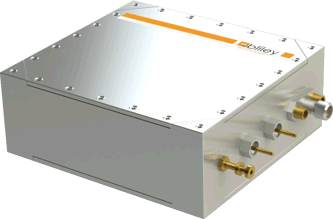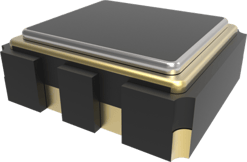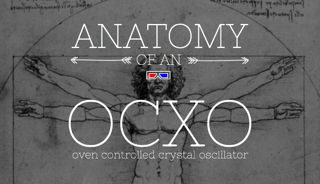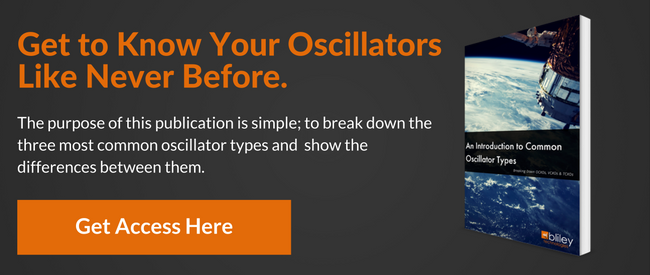
Modern electronic devices require a frequency reference. In many systems, this reference is provided by crystal oscillators, and the devices are used for many applications, including:
- Frequency synthesizers
- Local oscillators
- Similar types of circuits
Top 3 Crystal Oscillator Types that RF and Design Engineers Should Know
OCXO Oscillators
The oven controlled crystal oscillator is designed to be able to operate inside a temperature controlled oven.
It is the most stable crystal oscillator and is many times used in:
- Satellites
- Telecom
- Similar devices which require a very high stable frequency reference source
It is available in different output shapes and for different output conditions.
 Featured Product: Poseidon 2 g-sensitivity OCXO Oscillator
Featured Product: Poseidon 2 g-sensitivity OCXO Oscillator
OCXO oscillators are physically larger and require more power to run at ambient temperatures. It is for both these reasons that they are not used in small, battery charged devices. On the other hand, they achieve the best frequency stability possible in a crystal. The oven in the device is a thermally insulated holding cell which contains the crystal as well as the electrical heating elements. The crystal oscillator requires a short warm up period after power has been applied before the frequency achieves a full rated stability. The oven is placed at a temperature at which the slope of the curve for the crystal frequency and the temperature is zero.
Want to dive even deeper into the inner workings of OCXOs?
VCXO Oscillators
The voltage controlled crystal oscillator controls the change in crystal output by using DC voltage. It is used in mobile phones where it is interfaced with DAC, which is connected to a microcontroller. This mechanism is used to provide digital input while the DAC produces analog voltage output which in turn controls the VCXO oscillator output. Deviations which occur in the frequency are compensated for by the voltage control pin.
_Render.png?width=268&name=BVCS(H-J)_Render.png) Featured Product: Bliley BVCS(H/J) VCXO Oscillator
Featured Product: Bliley BVCS(H/J) VCXO Oscillator
The VCXO is usually used to make fine adjustments to the operating frequency. This is because the voltage of a VCXO can vary to a few tens of parts per million. The VCXO is mainly used to adjust the output frequency to match an accurate external reference. The oscillator is also used in equipment that may generate radio frequency interference by adding voltage that varies to the control output in order to disperse the interference spectrum and make it less distracting.
TCXO Oscillators
The temperature controlled crystal oscillator is specifically designed to be able to handle large variations in ambient temperature. The crystal oscillator is housed with a thermistor which is responsible for handling the continuous change in surrounding temperature and control the crystal oscillator.

Featured Product: Bliley BTCS2 TCXO Oscillator
TCXO oscillators take up a small amount of space and are quite cost effective. When temperature oscillation is applied within the module, the performance of the oscillator is improved by a considerable extent. The TCXO is comprised of several elements:
a. Compensation NetworkIt is put in place to sense the temperature and produce a voltage that is its inverse. This is achieved using some form of digital signal processing.
b. Oscillator Pulling CircuitThe generated voltage is applied to a circuit that can pull the frequency of the crystal oscillator.
c. Crystal OscillatorA standard circuit that is used to provide stable operating conditions.
d. Voltage RegulatorUsed to regulate the voltage and avoid unwanted temperature changes.
e. Buffer AmplifierUsed to increase the drive to the output and provide isolation from external load changes.
We see that a large variety of crystal oscillator devices are available on the market, with several different categories catering to specific needs that individual machines might have. To construct the best machine possible, make sure you use the right kind of oscillator for your project which is tailored to your specific needs.
What's next?
Now that you've learned about the types of crystal oscillators, you might want to consider learning about the different types of crystals inside your oscillators.







